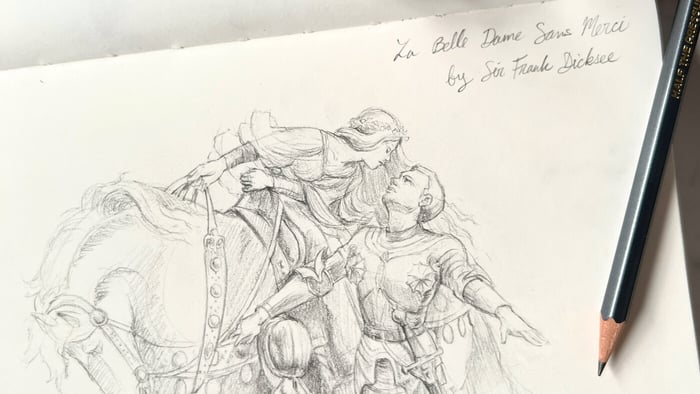
Body Language of Love in Art
Last month I did a series of pencil studies based on works by various artists - ranging from iconic masterpieces to obscure, personal favorites. Although the content of the work I studied was the same: a couple depicted enraptured with each other. I created these studies for a number of reasons. For one, it was Inktober so I was inspired to draw something (although not necessarily ink it since I love the look of pencil). Second, I wanted to become more confident with my freehand figure drawing. So I decided the best way to do that was to get more practice in. Third, I wanted to analyze what made these artworks and their style so successful. And finally, I'm a total sap who loves love, so the idea of drawing couples just felt like a fun activity to do during a slow workweek.

I walked away from this exercise with an interesting observation: grand, breathtaking, endearing love is often communicated in paintings with an awkward pose. In some cases, a pose so contorted that there is no way it can be recreated in real life. Take Gustave Klimt's The Kiss. Stripping the work of its blanket of colors, the woman's odd pose with her neck turned at a 90 degree angle, becomes more striking. Or in the work of Yoshitaka Amano, how his figures take on angular poses that in real life would appear unnatural.

With the work of Sir Frank Dicksee, although he approached his figures much more realistically, the male figure in La Belle Dame Sans Merci still manages to take a uniquely memorable pose that defies logic by holding the horse's bridle and his helmet simultaneously in one hand!

These observations led me to another conclusion: that some of the most emotive and successful artworks exaggerate reality. Therefore as an artist (depending on what exactly you are trying to communicate), strictly following observed life or relying on photo references, can limit expression. I admit that I am guilty of this which is why doing these drawings of these particular artworks, helped me to reaccess my habits and crutches as an artist. Leading me to a personal breakthrough:
My art is actually better when I allow myself to render figures loosely and free myself of the worry of whether they are entirely anatomically correct!
I've begun exploring new ideas for paintings with this newfound realization in mind, and really feel it is helping me to take my work to the next level. I can't wait for you to see. ✨
